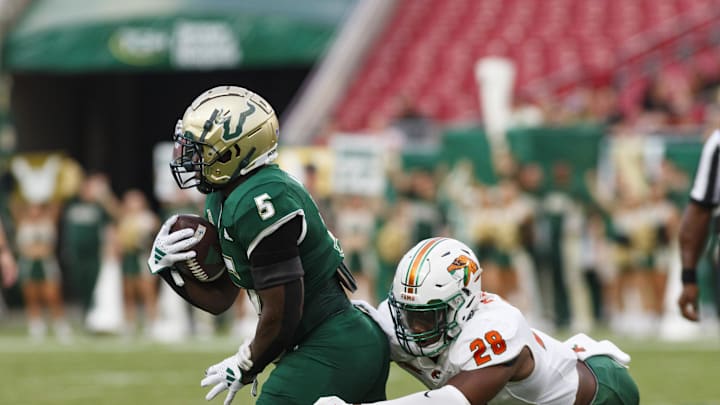USF Athletic Director Michael Kelly is right. He doesn’t support the idea of a cap on what American Athletic Conference programs can spend on athletes, and he shouldn’t. Such a restriction could be highly damaging to his programs, especially USF football.
The original idea was floated by new AAC Commissioner Tim Pernetti (originally reported by the Commercial Appeal newspaper in Memphis).
I reported Kelly’s comments about Pernetti’s gambit and kept the post to just the facts.
Now, here’s my unvarnished opinion on why I believe Kelly is right.
First, I doubt Pernetti came up with this idea on his own. The potential financial impact of spending an estimated $20 million to the NIL cap is a looming concern for some programs, likely including some in the AAC who may have whispered in the Commissioner's ear.
USF is not one of those programs, though. South Florida has made substantial investments in athletics over the last few years. It's a matter of fairness. It’s not right to expect USF, or any program with sufficient resources, to prop up athletic departments at schools with fewer resources.
While taking this position might seem like a self-serving move for USF, it's important to remember that college athletics is currently a fiercely competitive arena. It’s every school for itself.
USF is aiming high and is scheduling accordingly. Outside of the conference, the Bulls play Alabama and Miami this year. They’ll play Boise State, Miami, and Florida in 2025. In 2026, Alabama returns to the schedule along with BYU.
Future years will see matchups with Louisville, North Carolina State, and Notre Dame. The Louisville game in 2027 could be the first game in the new $340 million on-campus stadium.
The Bulls will need top athletes to compete at that level, and we know what it takes to get that kind of player these days. You may find it distasteful, but show them the money. By the way, considering how the NCAA fatcats got bloated bellies and nice mansions over the years on the toil of, ahem, "student athletes," I have no problem with the new landscape.
With direct payments from the university to the players now all but certain—the rule change allowing such payments is pending approval by a federal judge—USF shouldn’t have less to spend because of an arbitrary cap in its conference. That could cost them critical recruits who make the difference between winning and losing to better-funded programs.
A cap would also signal that the AAC is not, as previous commissioner Mike Arresco insisted, a “Power 6” league.
Of course, all that assumes USF will still be a member of the AAC by then. That’s a debate for another day.
If you go onto the USF campus now, you see a commitment to athletes and their sports—men and women—that never existed there before. It’s a first-class operation, and it happened because leadership found a way to raise funds and think big.
Other schools should do the same thing if they want to play at this level.
